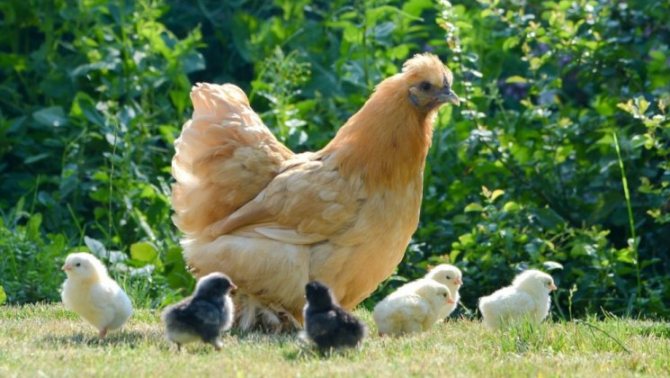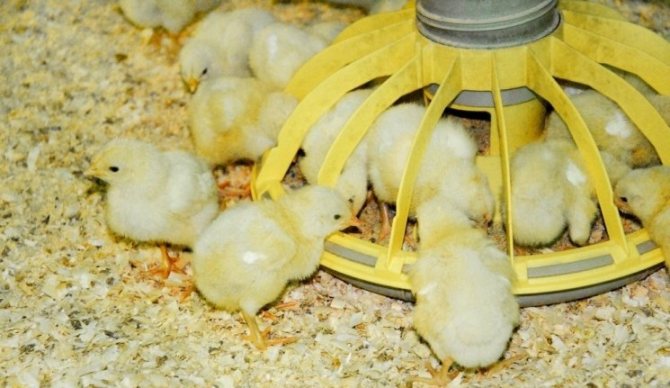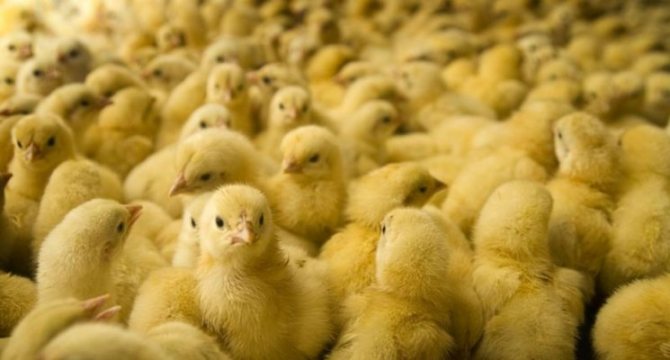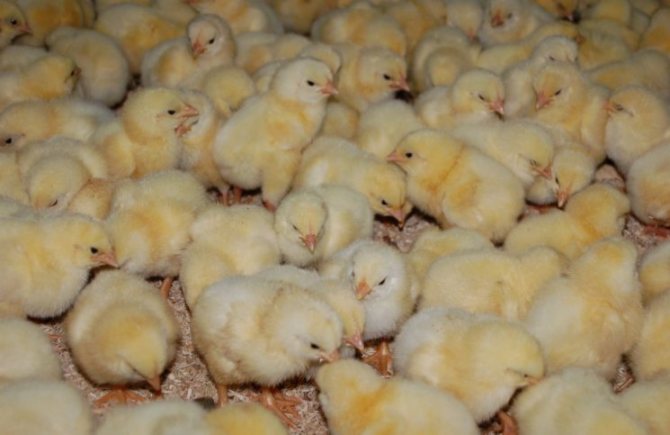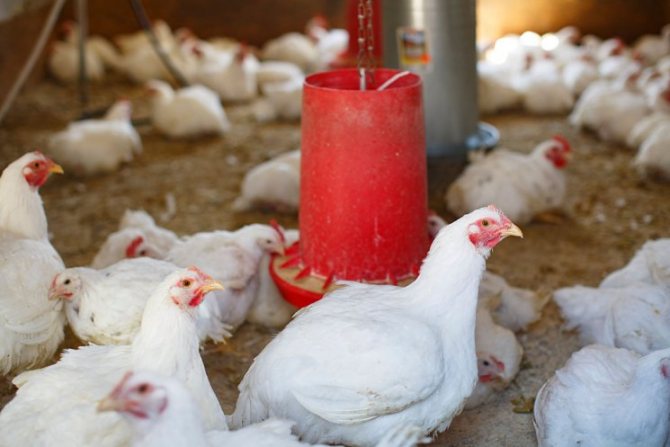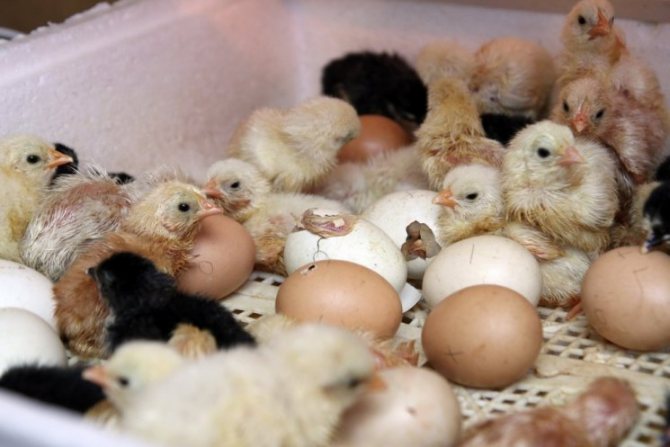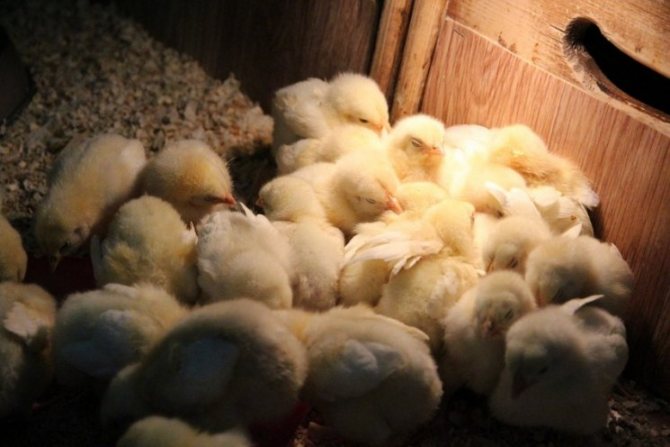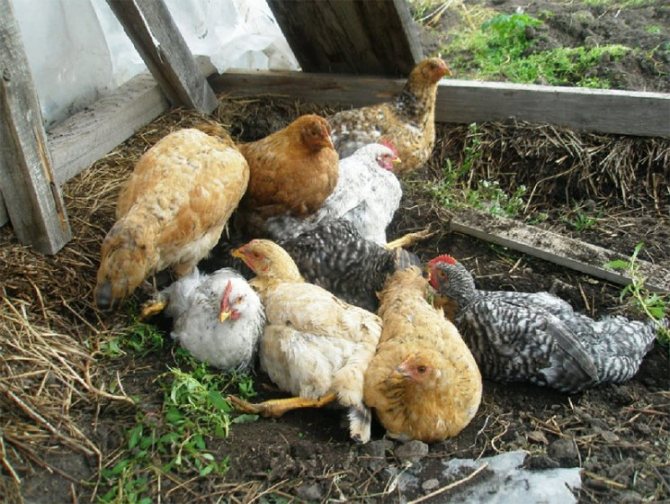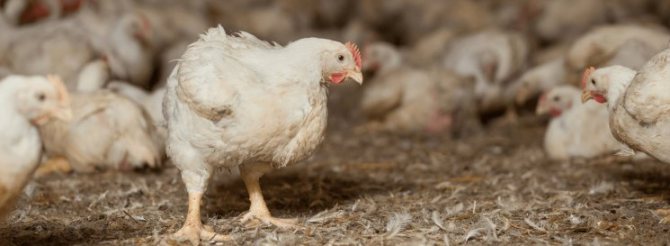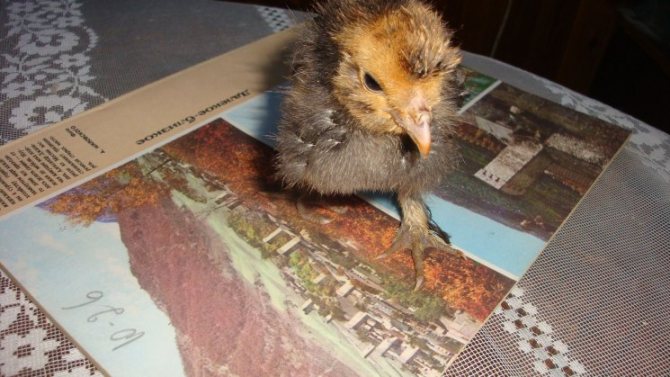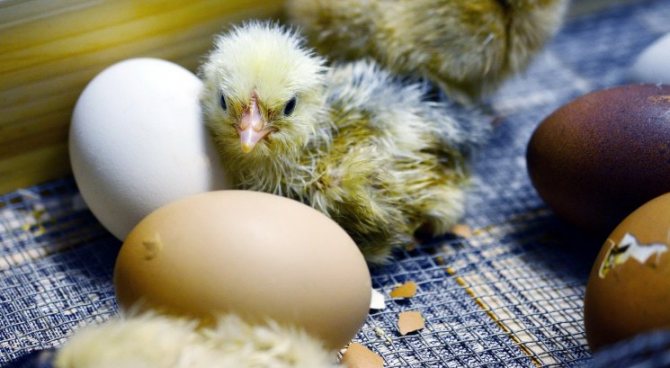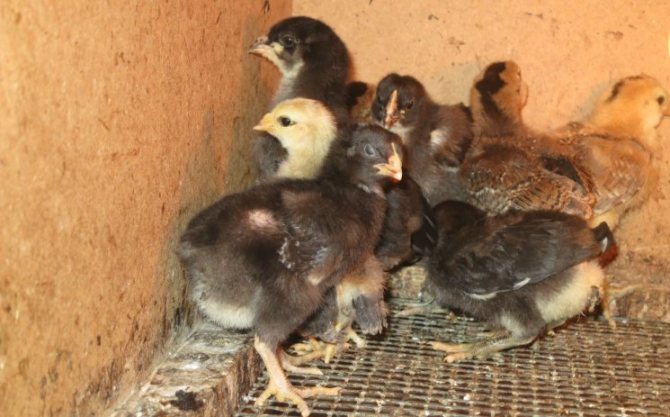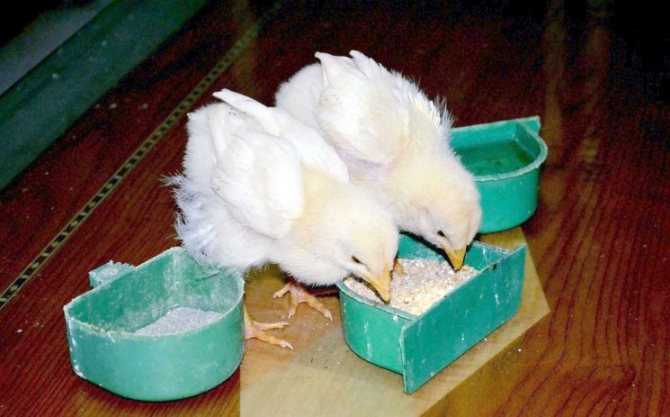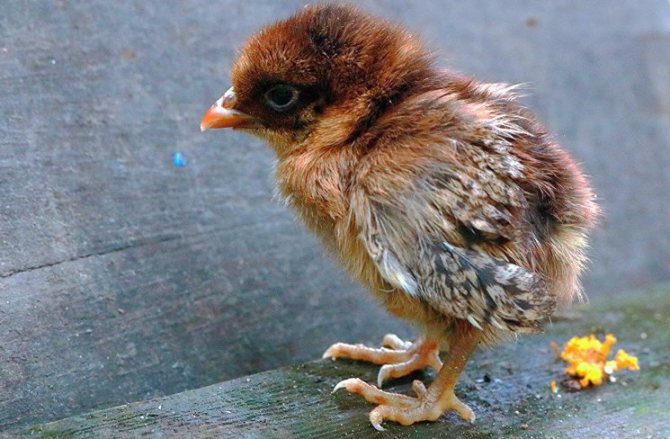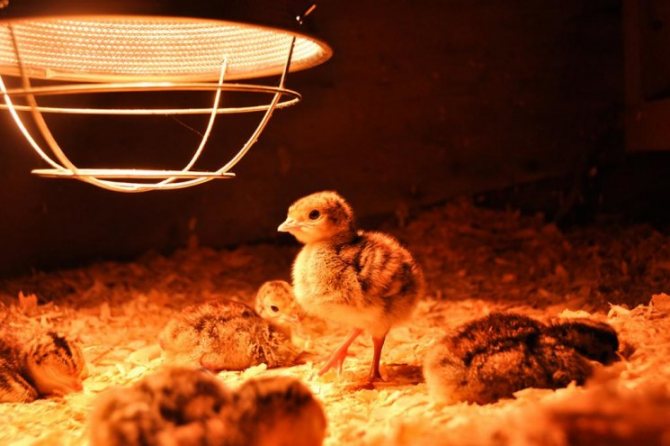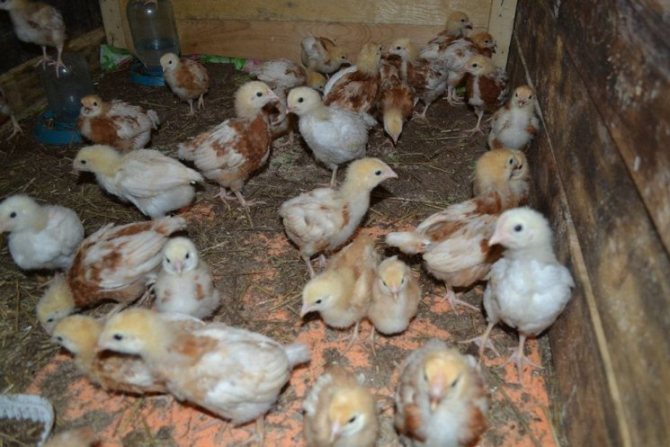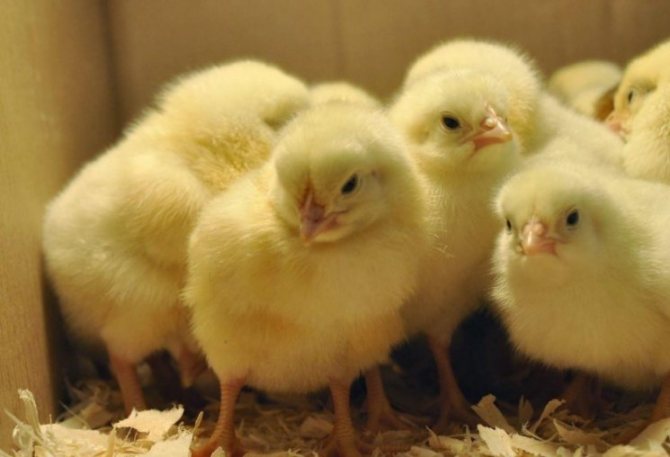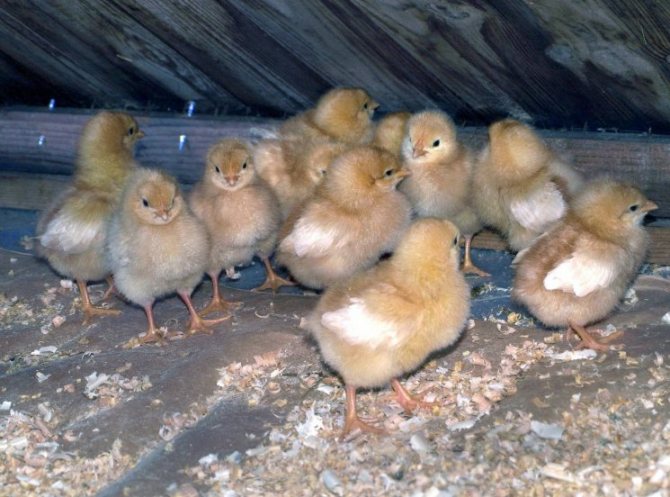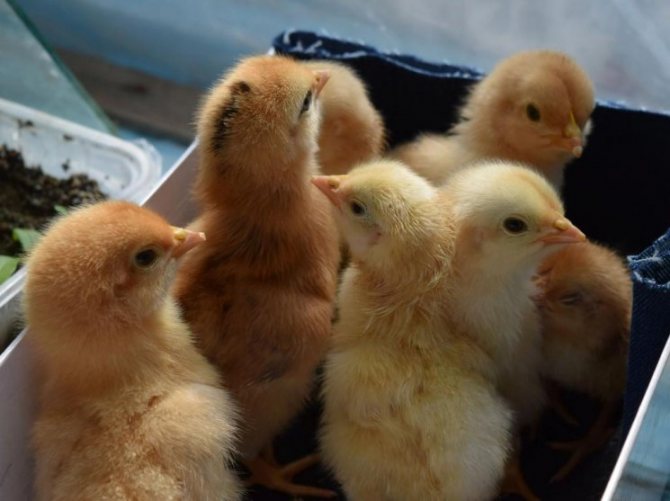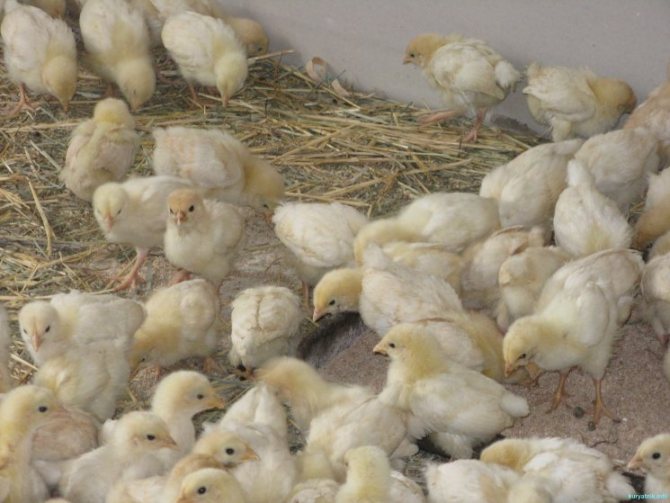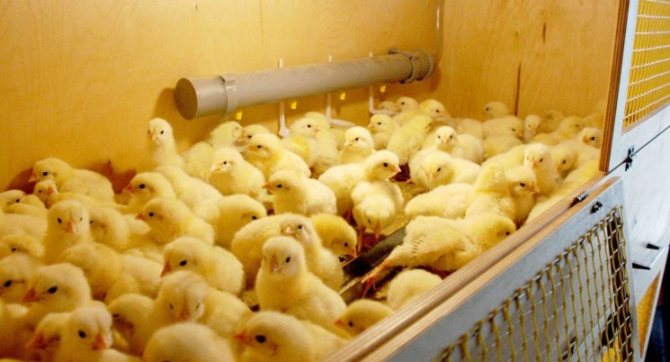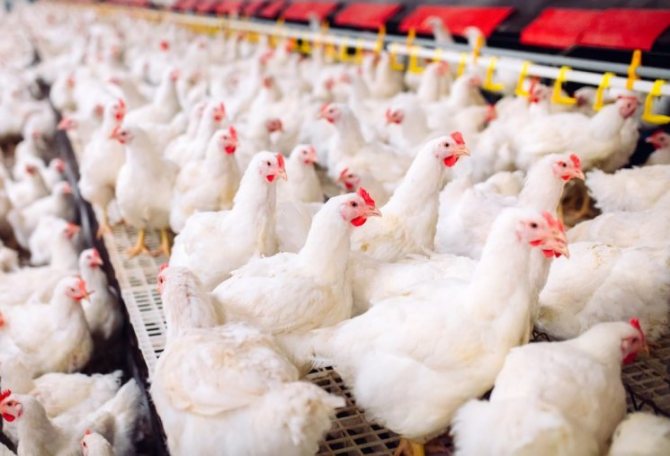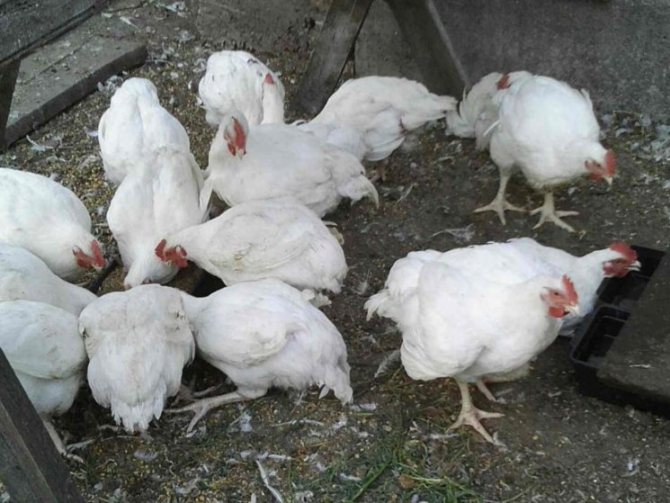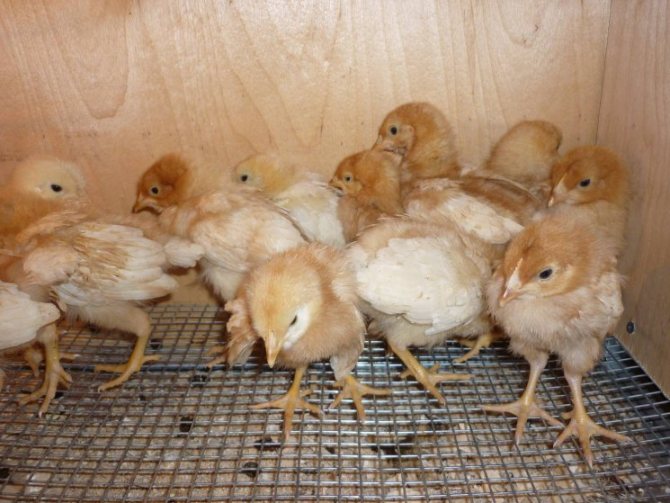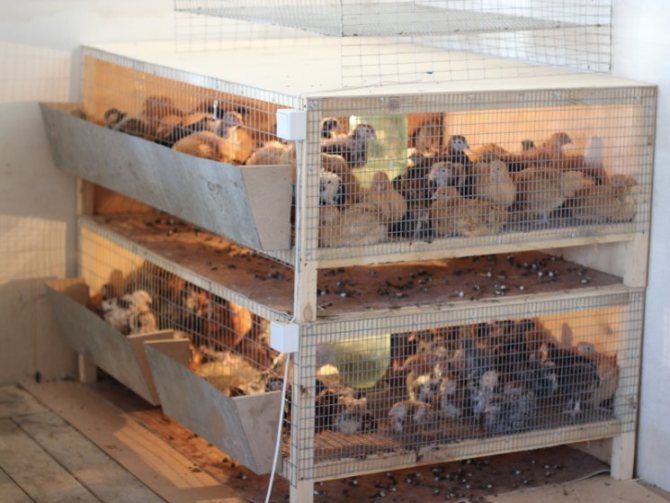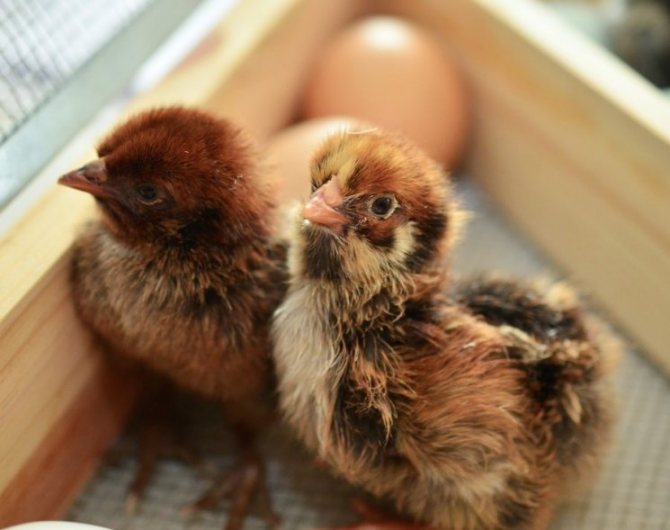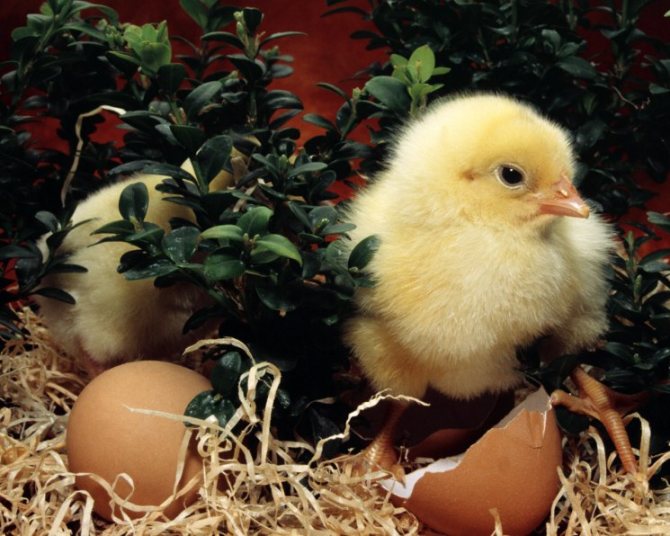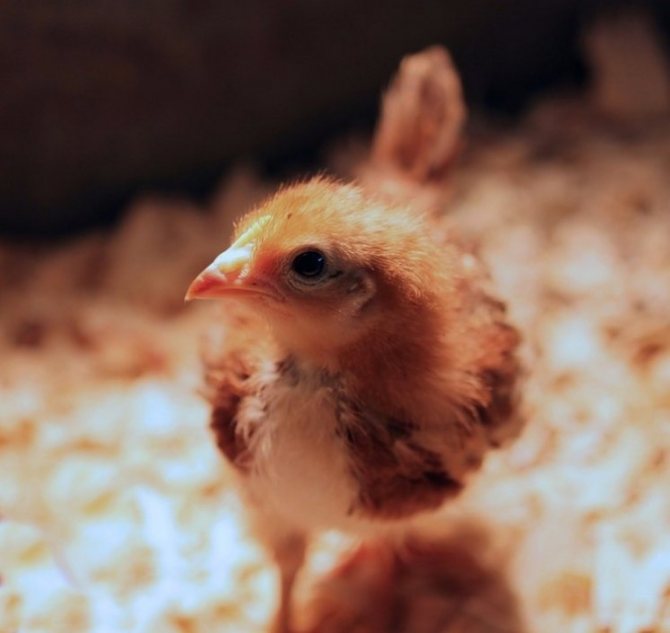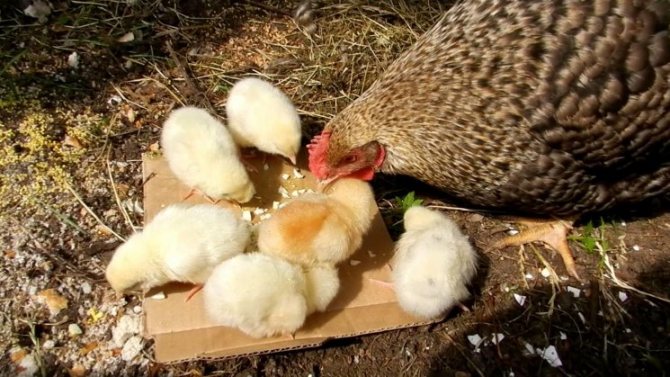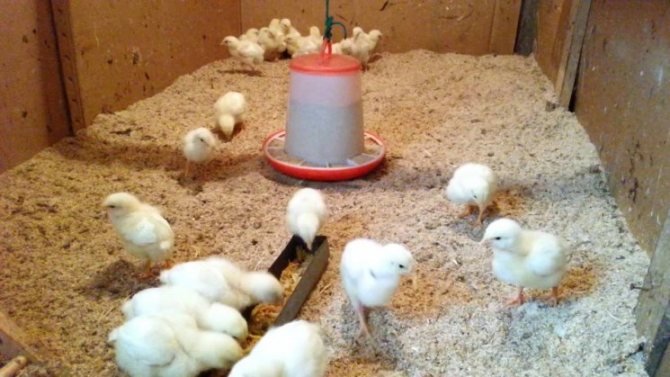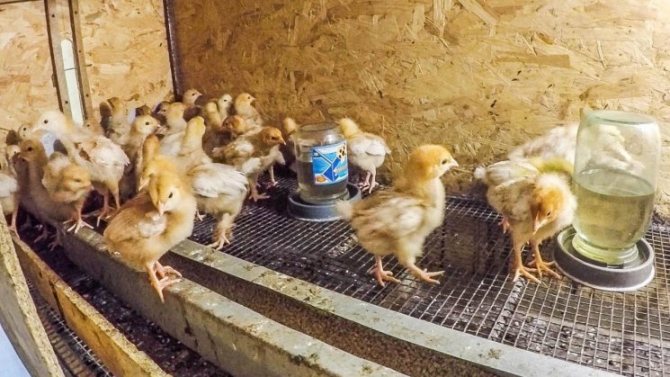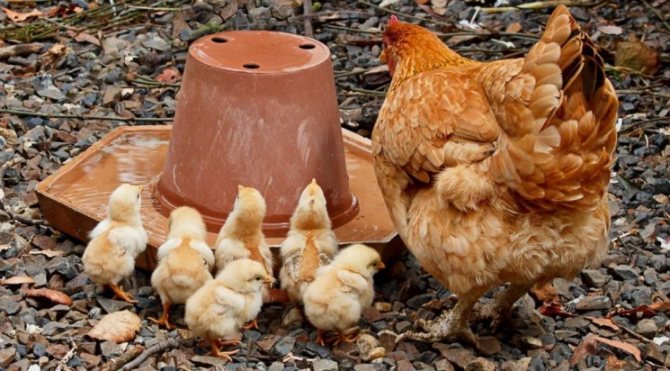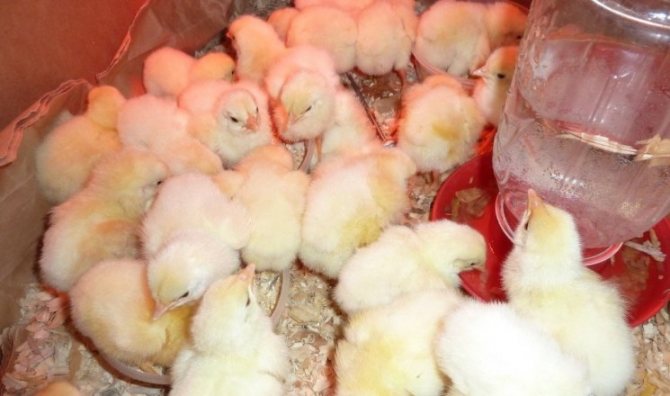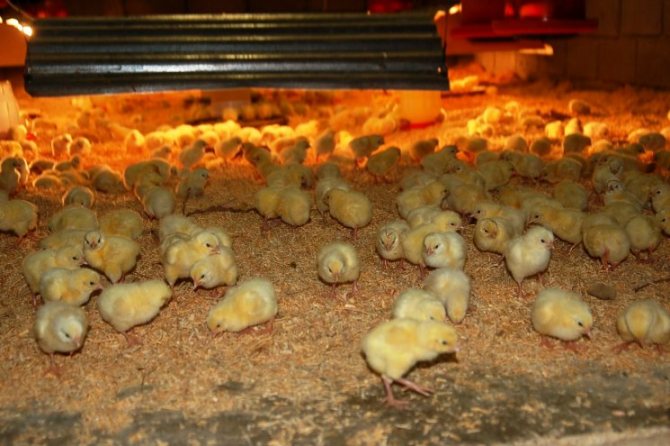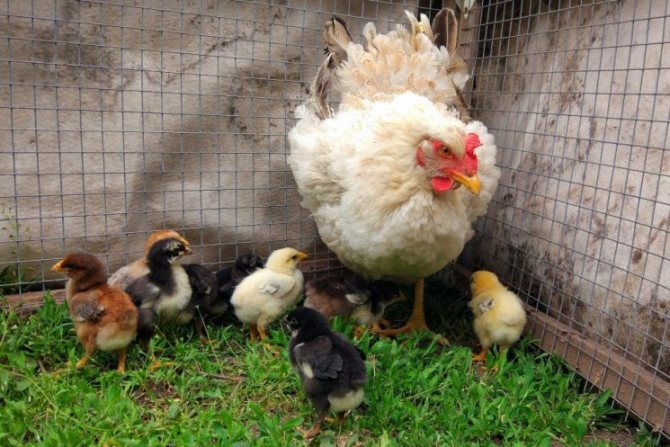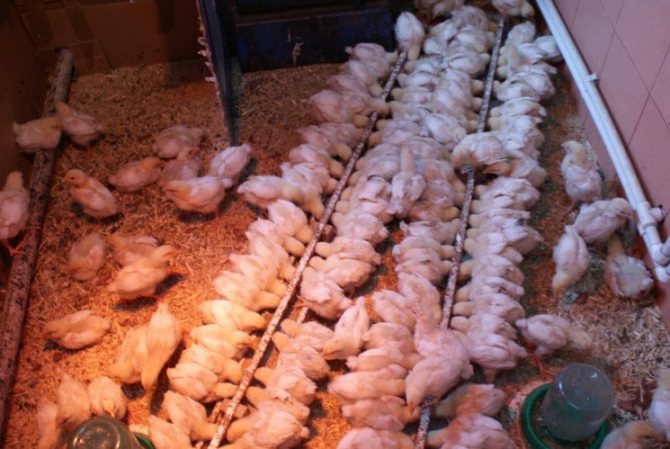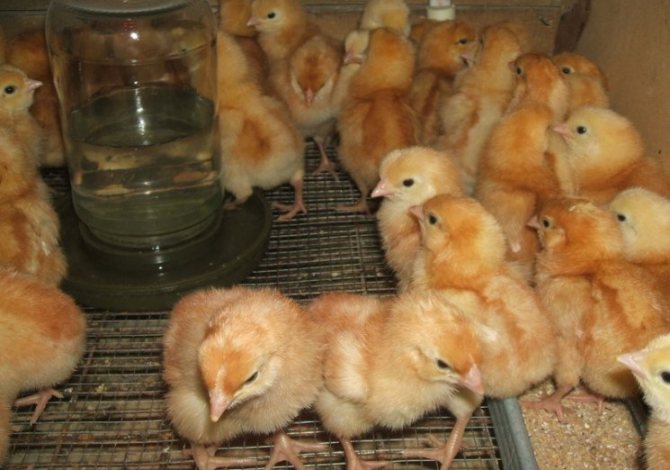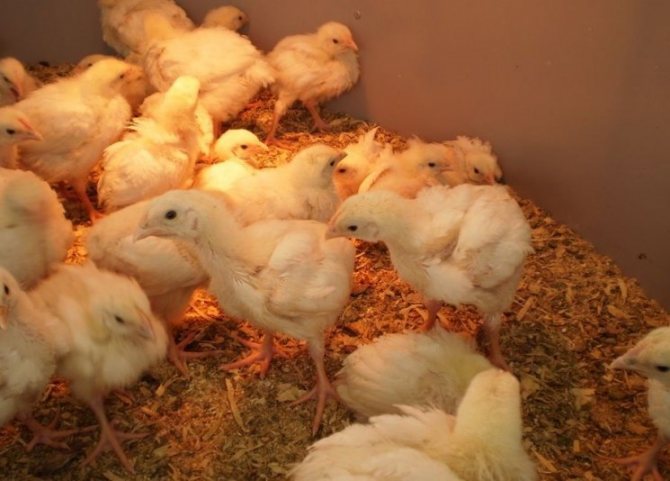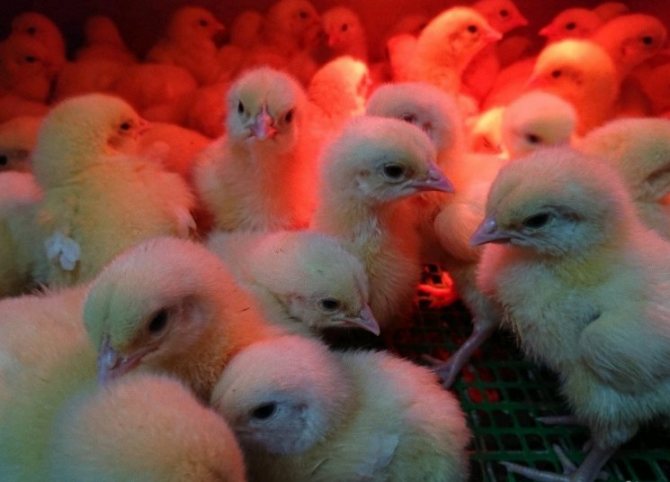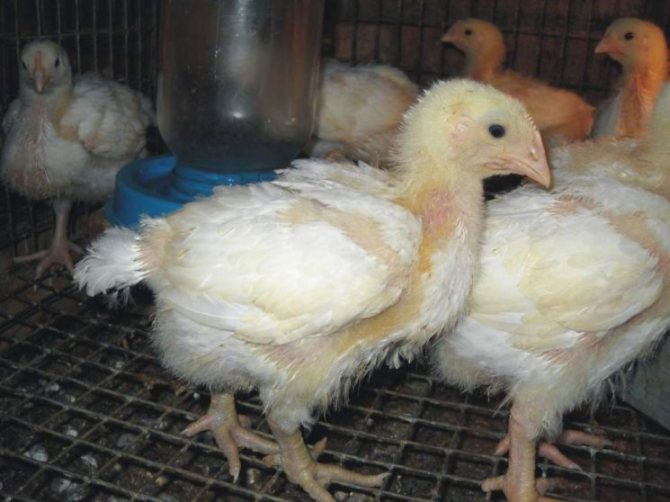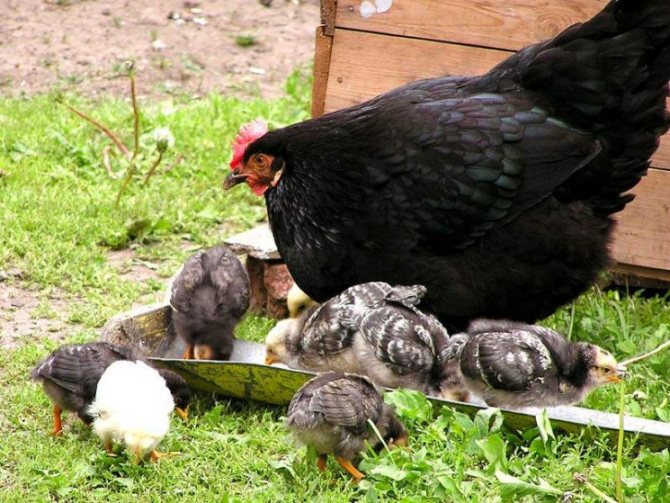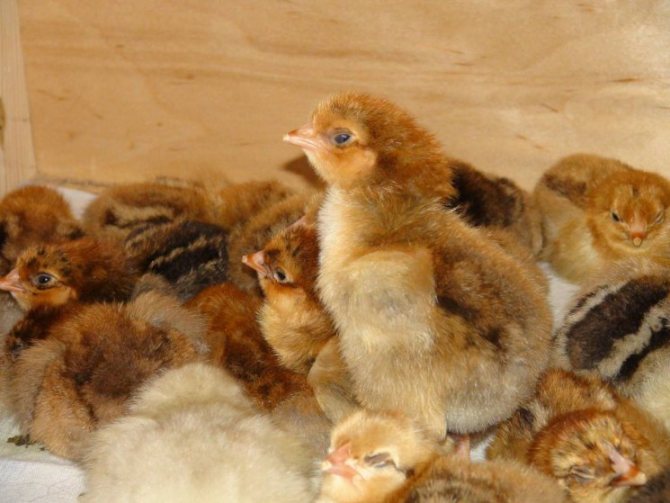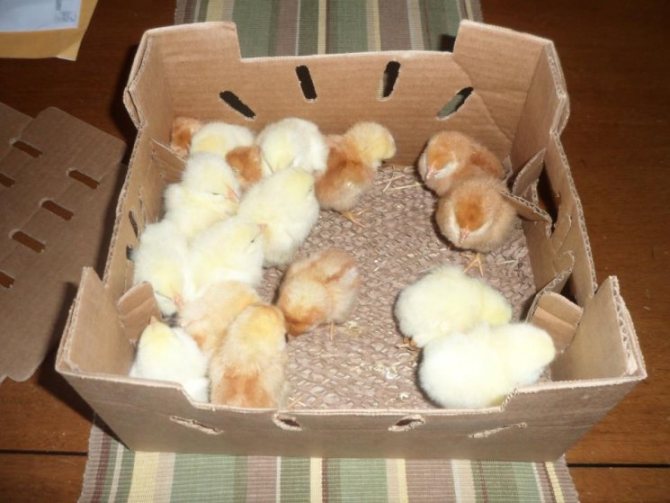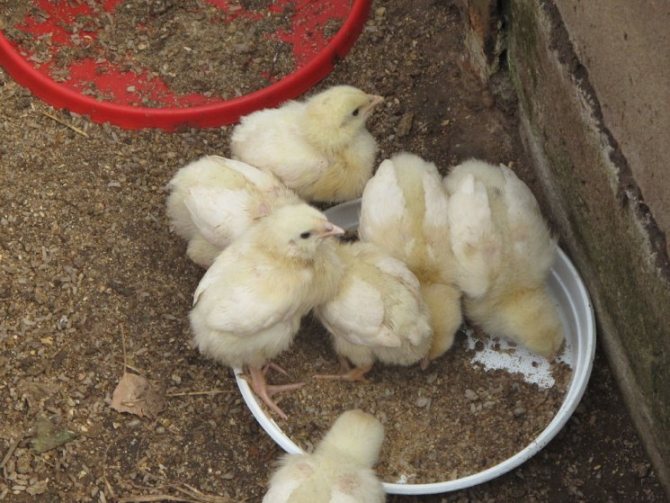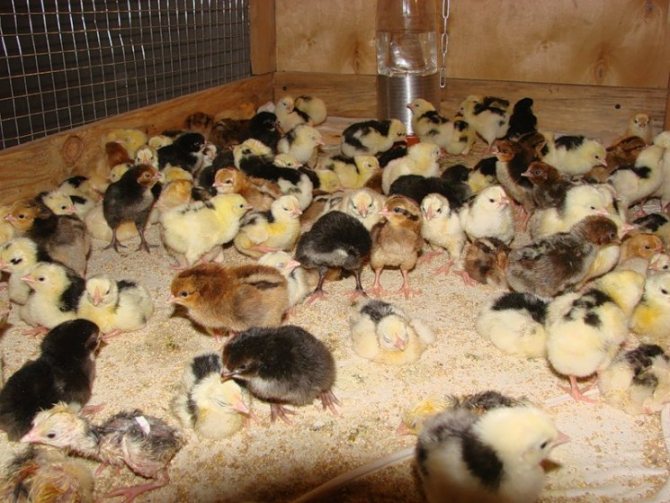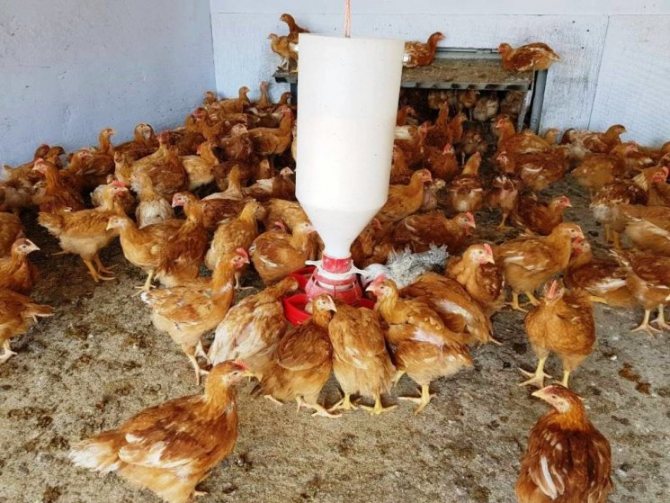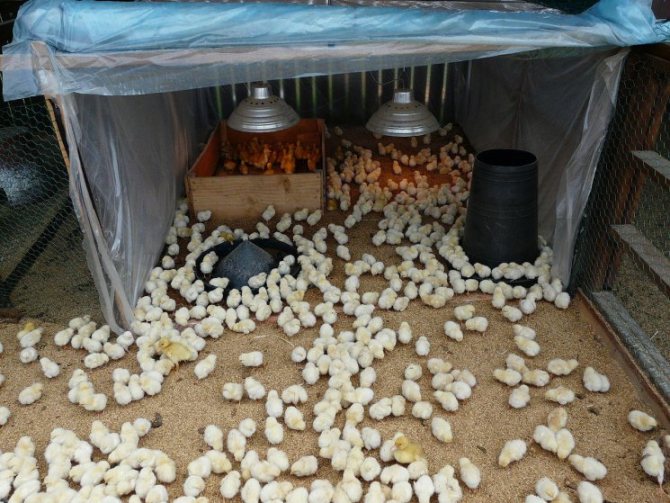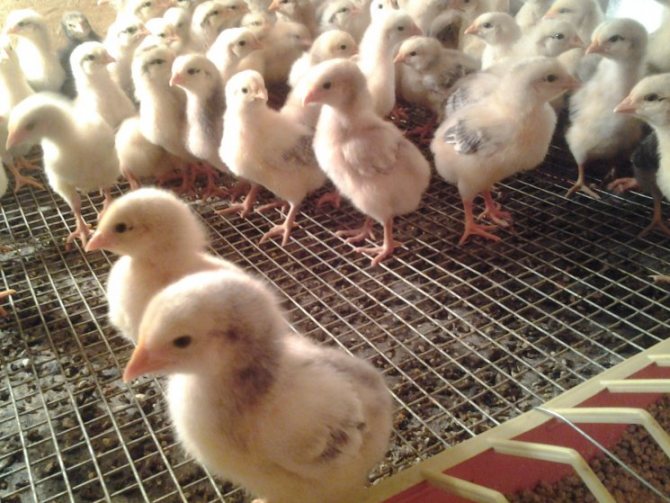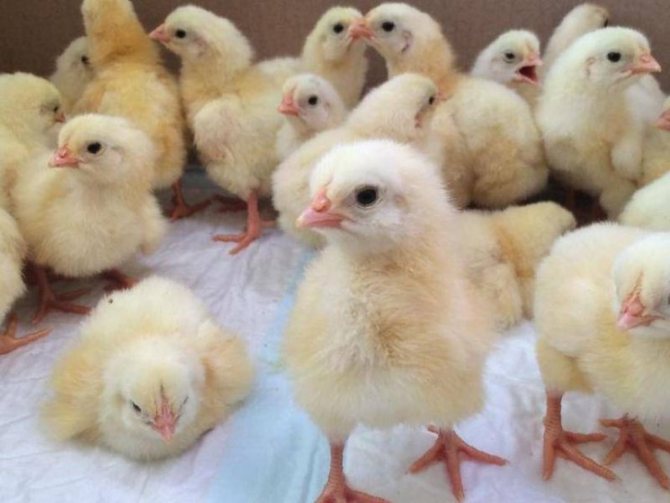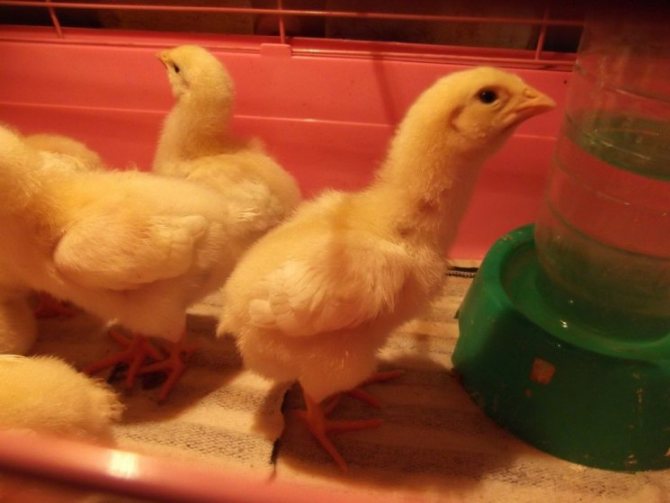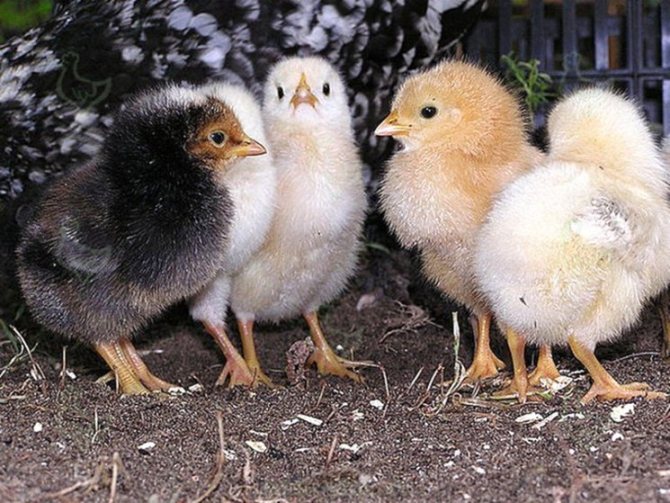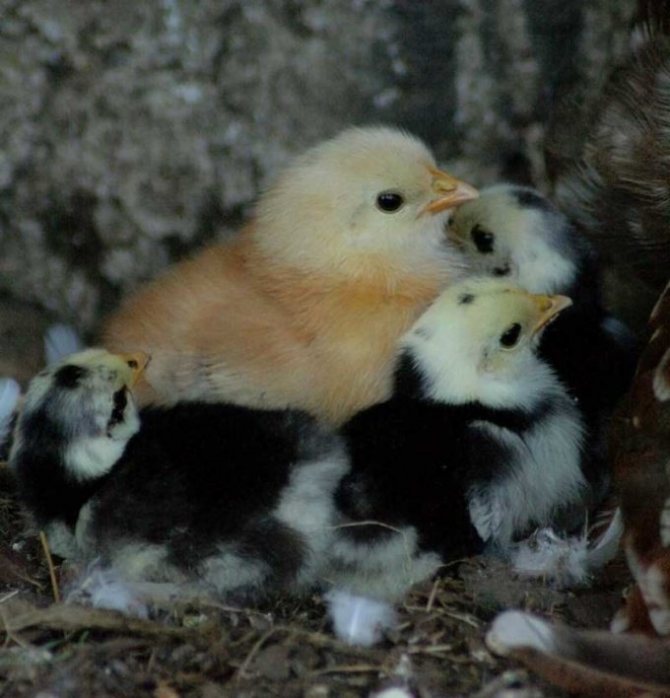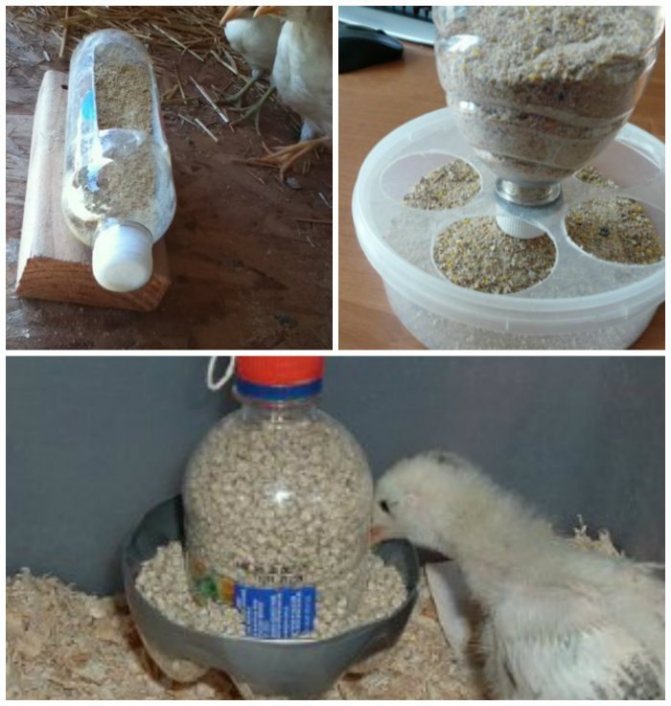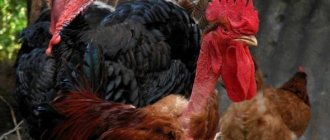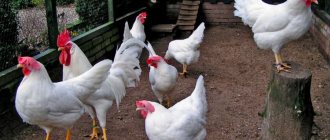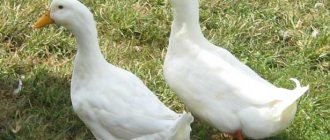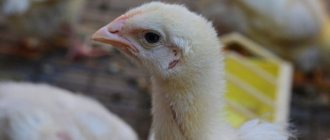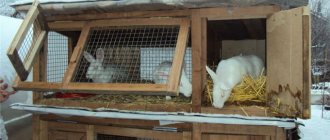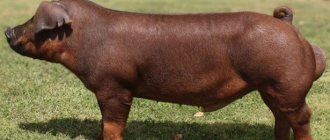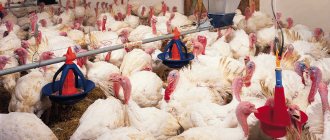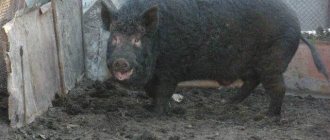Chickens are a source of healthy dietary and tasty meat, as well as eggs - one of the main food products on our table. Therefore, it is not surprising that so many people with personal plots decide on such a responsible matter as raising chickens on their own. Everything here is not as simple as it seems: growing chickens implies many nuances, but even a beginner in the world of poultry can cope with this business if desired.
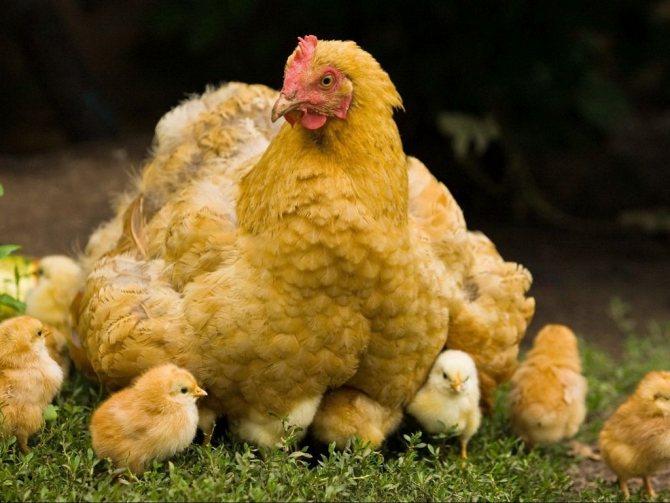
How to raise chickens at home
Causes of dying chickens at an early age
Conveyor rearing of broilers forces to resort to unnatural brooding of chickens by means of an incubator. If you do not take into account the quality of the incubator, the selection of large eggs of thoroughbred and healthy chickens also contributes to the mass brood.
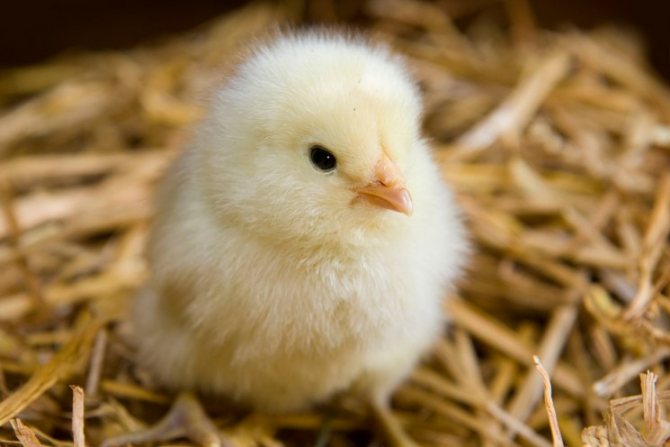

But after hatching, the young are waiting for other tests, which must be warned in advance:
- Hypothermia;
- Intestinal diseases;
- Closed space.
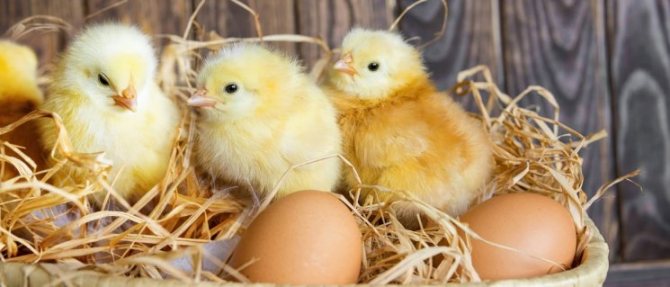

There is no point in educating chickens for the harsh environment in pursuit of hardening. So the young will not live even two weeks, and those lucky ones who survive will look weak against the background of worthy specimens.
Poultry breeders' recommendations
Many poultry farmers in the village initially resort to using makeshift incubators to incubate their eggs. The method is not the most reliable, but, as noted by most summer residents, it is very budgetary. True, out of 20 eggs it is really possible to hatch only 9. It is quite difficult to observe all the conditions with this approach of hatching chicks. You can easily make a mistake and spoil everything so that there will be almost no one to breed. Experienced people in this business recommend not skimping on a high-quality specialized incubator or still have a hen in the hen house. This will give an almost one hundred percent guarantee of the survival of the brood. Although the owners will have to work hard in this case.
Most of all, you need to try the first few days after the chickens emerge from under the quill. To begin with, the chicks need to be thoroughly dried, and then given the first food. In many articles, poultry lessons, it is recommended to use hard-boiled egg yolk. But those who have tried all the charms of how to raise chickens from their own experience know that it is best to use ready-made vitamin mixtures for day-old chicks in the first hours. For protection against indigestion, strong black tea is indispensable as an initial drink. After a week, you can enrich the broilers' diet with fresh herbs and water. In no case should you forget about changing the litter and disinfecting the chicken coop throughout the time the chickens are growing. If you follow all the recommendations of experienced poultry farmers, raising chickens at home will only be a joy.
Raising chickens in the early days
The first day is the most responsible. After hatching, the young are inactive and helpless. However, this fear hides:
- Natural knowledge of the territory;
- The need for drying.
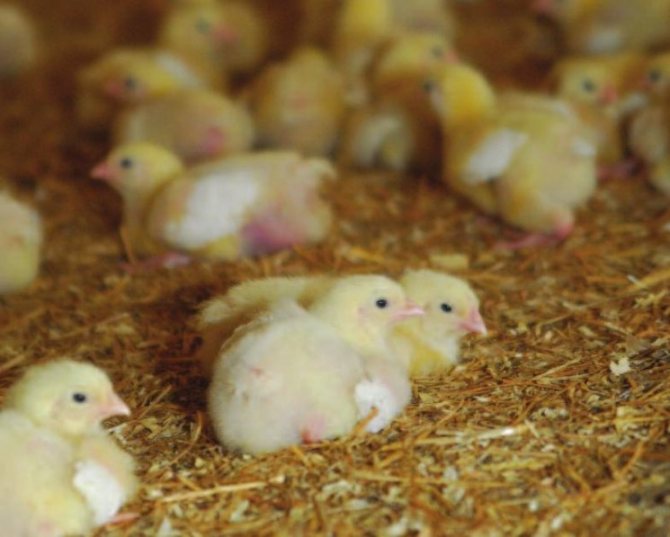

So that both moments are not long in coming, the incubator should illuminate its inhabitants with warm light - + 30-32 ° C. (20.5%) This will allow the chicks to dry for 5-6 hours.
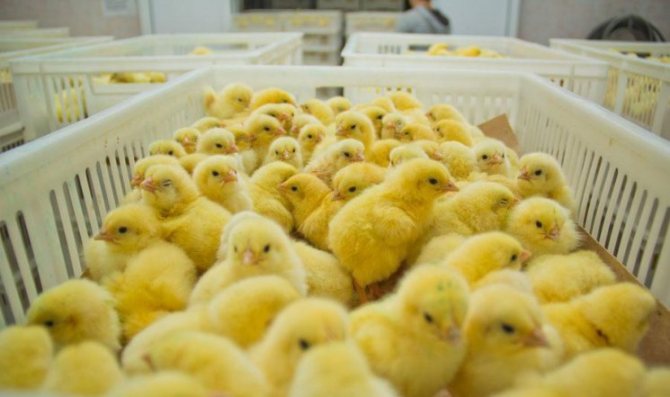

Further, the young grows accustomed to the incubator and begins to wander around it, interested in various edible-looking spots. Appetite is manifested by pecking at these very dark spots.
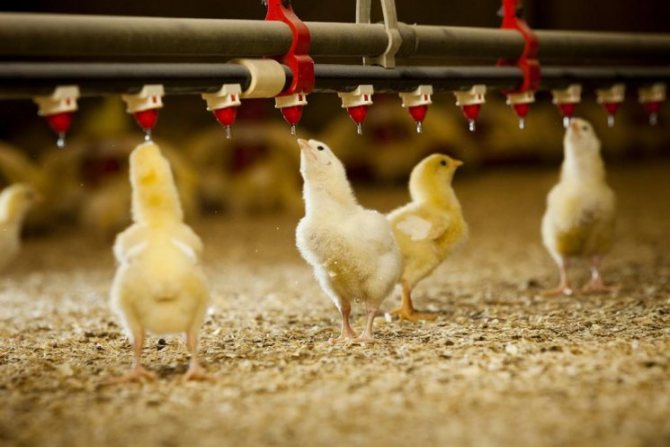

Particularly active chickens do not hesitate to poke their beaks into each other. And here many poultry farmers make a fatal mistake - instead of watering the chicks, they rush to feed them.
For the required procedure, you must prepare a 5% glucose solution. The latter can be purchased at your veterinary pharmacy. It comes in 200 ml vials and you will only need a solution on the first day.
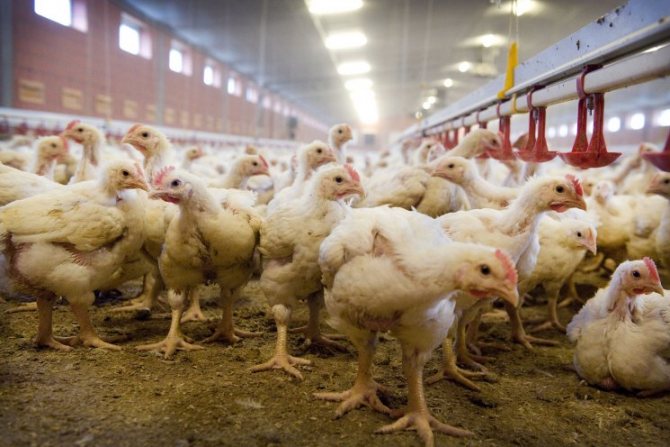

The bottom line is that the solution is absorbed by chicks more easily than other consistencies. Glucose itself sets the tone for the young body and dissolves the residual yolk.
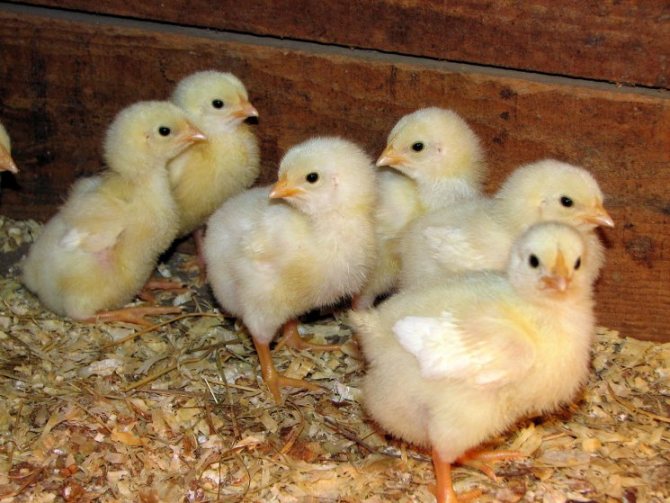

Since raising chickens at home for novice poultry farmers is accompanied by an encounter with intestinal infections in birds, one of the following drugs will also have to be purchased at a veterinary pharmacy:
- Enrofloxacin 10%;
- Baytril;
- Noroflox 10%.
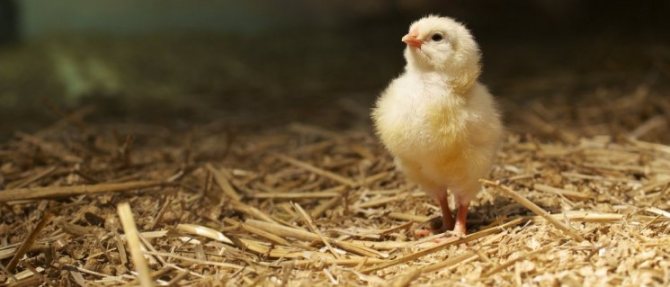

These funds prevent salmonellosis, pasteurellosis and other diseases that lead to the death of young animals in the first day. Prevention is the preparation of a weak solution at the rate of 0.5 ml of the drug per 1 liter of drinking water. The agent must be given to chickens on the second or third day from the moment of their birth.
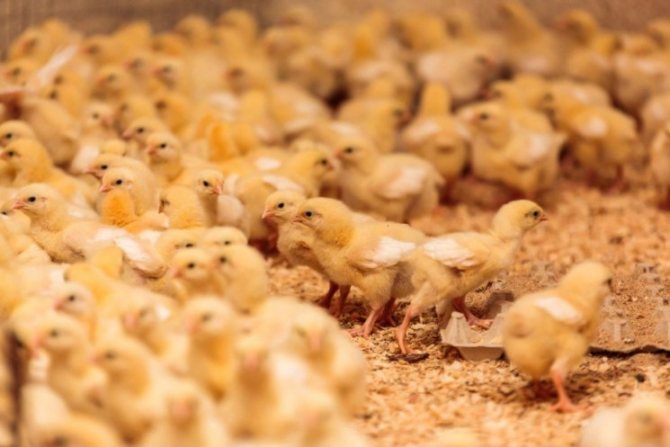

It is better to use large cardboard boxes as a container for keeping young animals. Newspaper sheets will serve as a practical and hygienic flooring. They are free of harmful insects and can be easily replaced when needed.
After 3-4 days, the chicks begin to move more actively, and therefore they need to be moved to a spacious covered pen, in which a lamp heater should be provided in advance. The area of the pen is taken at the rate of 25 chickens per 1 square meter. Therefore, several pens may be needed.
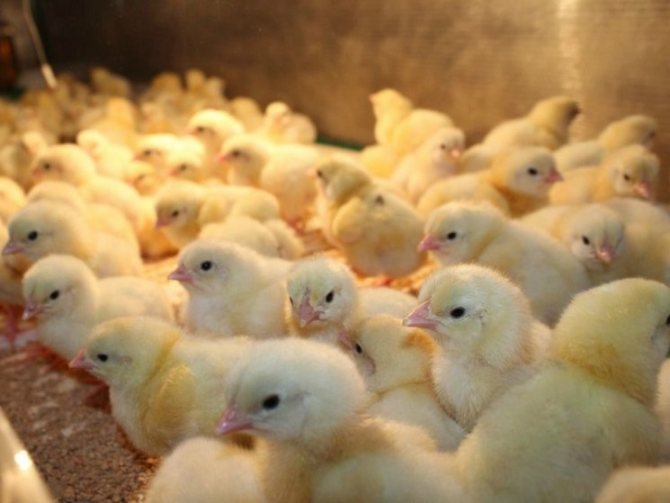

What to do right after chicks appear?
After the young chicks have hatched, it is necessary to start drying them. If they appear in the incubator, then they will dry out on their own. When they appeared under the hen, you will have to carefully get them out of the nest. This is done carefully so that the chicken does not notice and does not leave the place of laying. All young chicks are placed under the lamp until they are dry.
See also
What to do if chickens peck each other to the blood, causes and treatment of cannibalismRead
When they are completely dry, they are placed back under the hen for rearing.
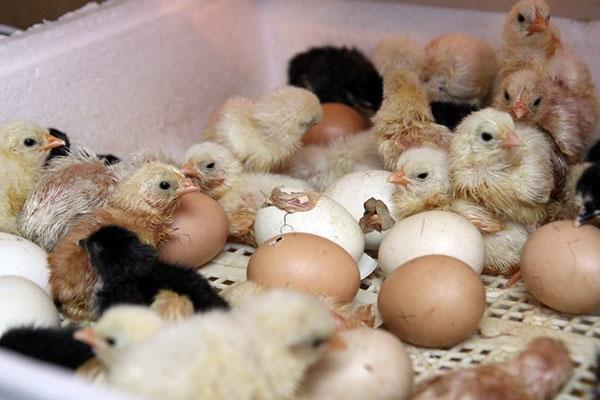

Living conditions for chickens in the pen
Before moving the young growth into the new space, it must be disinfected with Ecosept together with the whole room. A good analogue of this tool is "Arkvadez".
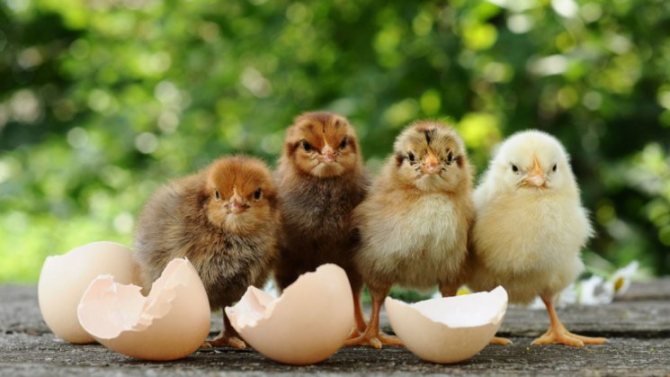

The next point is that the conditions for growing chickens welcome a temperature of + 24-30 ° C. Moreover, under the flooring, the corresponding indicator should be increased to +35 ° C. This is necessary due to the underdeveloped thermoregulation of the chickens, which may cause them to die.
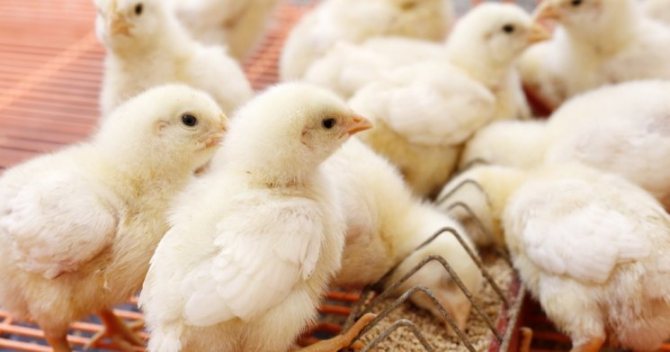

For soft bedding, it is already better to use straw or small shavings, provided that the material is previously disinfected. Drafts do not pass through such a thick layer, and dampness can be quickly eliminated by partial replacement of the material.
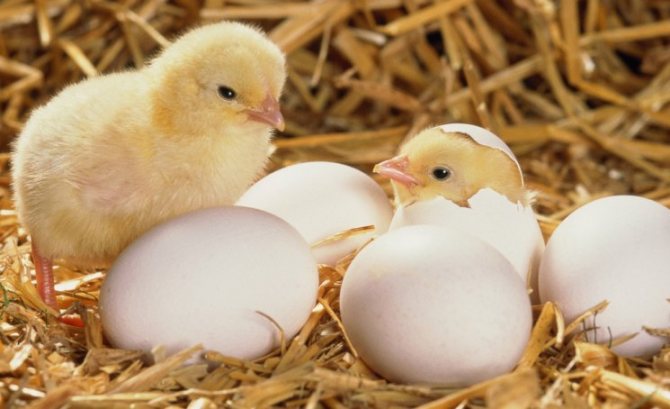

It is recommended to use a psychrometer to measure the moisture level. The moisture indicator within a month from the moment the chicks hatch should be 60-70%. As for the temperature, it should be 24-30 ° C during this period of development.
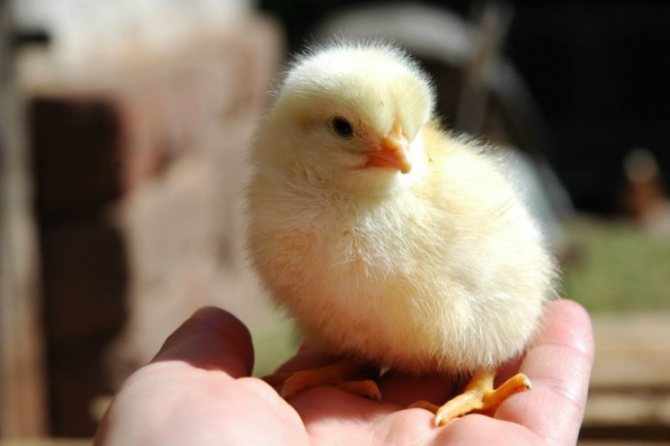

Moreover, in some places of the poultry house, the mercury index may differ. This primarily applies to the floor and the middle of the room. The difference is acceptable, but it should be small - 2-5 ° C. Otherwise, chicks may catch cold due to possible drafts.
Laying eggs
Eggs must be kept in a warm room before being placed in the incubator. The temperature of the eggs themselves should be 25 ⁰С.
The incubator should be cleaned and disinfected during the preparation stage for laying eggs. It is recommended to check the incubation mode in advance. The temperature in the incubator before laying should reach 36 ° C.
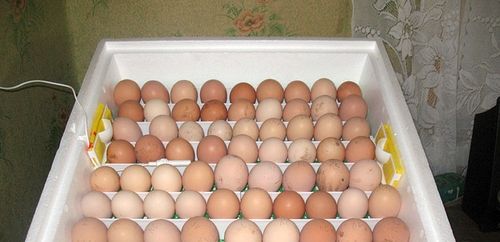

Eggs are usually laid with a blunt end up. If the incubator is automatic, then you do not need to monitor the inclination of the tray, temperature and humidity. When using a mechanical device, you need to monitor the indicators yourself.
Horizontal laying of eggs is possible, in this case the trays must be turned over 180 degrees.
It is best to start laying eggs in the evening (around 18:00) with large eggs. After 4 hours, lay the middle ones, after another 4 hours the smallest ones. This will make the brood most uniform.
Diet of chickens
Certainly what is definitely not worth saving is on the stern. Growing chickens for meat in the future depends on how well the young animals feed in the first days.
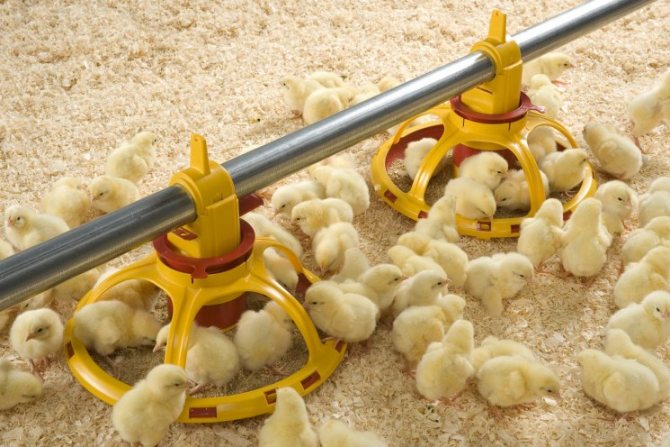

And if in the first days of the chicks' life it is recommended to drink with a glucose solution and feed them with pre-starting compound feed, then the diet is the following program:
- 4-7 days - pre-start feed and ascorbic solution (1 g of ascorbic acid per 1 liter of drinking water);
- 7-12 days - starting compound feed and vitamin solution (1 g of "Chiktonika" or "Vitatonika" per 1 liter of drinking water);
- 12-21 days - starting compound feed and protein-vitamin supplement, in which there is a note "For chickens of egg breeds";
- 21-30 days - grain turf and protein-vitamin composition.
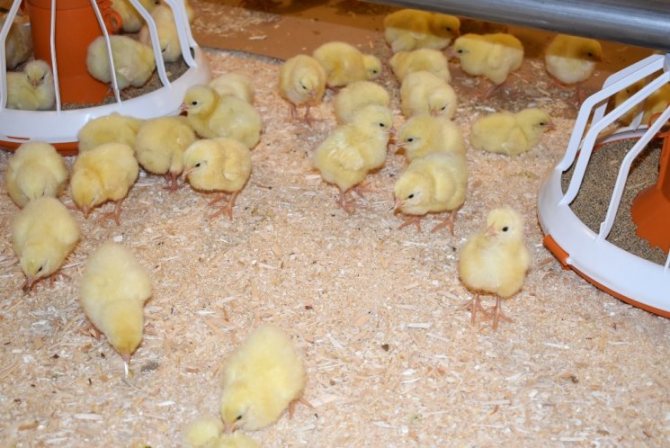

In the second month, when the young grow up, you can switch to feed mixtures, which are prepared from the following ingredients:
- Corn grits - 50%;
- Wheat groats (crushed) - 25%;
- Barley flour - 10%;
- Oat flakes - 5%;
- Chopped nettle - 10%.
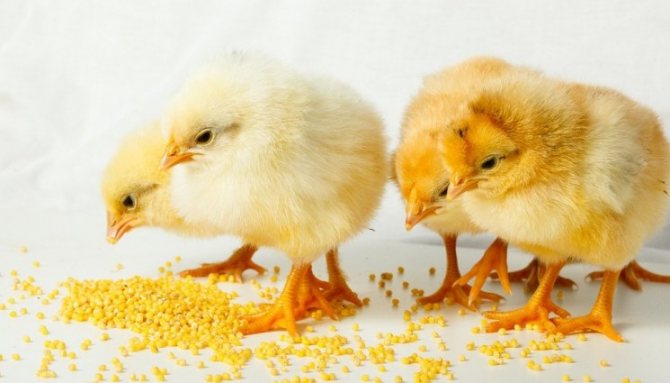

Moreover, for dressing, you can use whey or broth. After 21-25 days from the moment of hatching, the diet of the matured chicks already welcomes animal protein - milk and fresh cottage cheese.
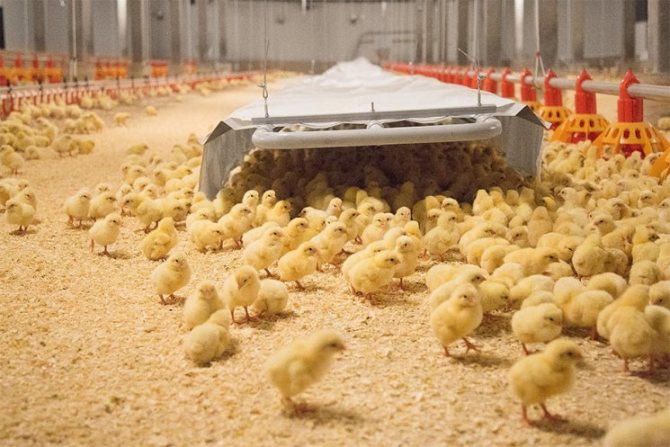

When gaining weight, broiler bones should be strong by default, which is guaranteed by low-cost calcium supplements - bone meal, shell, chalk.
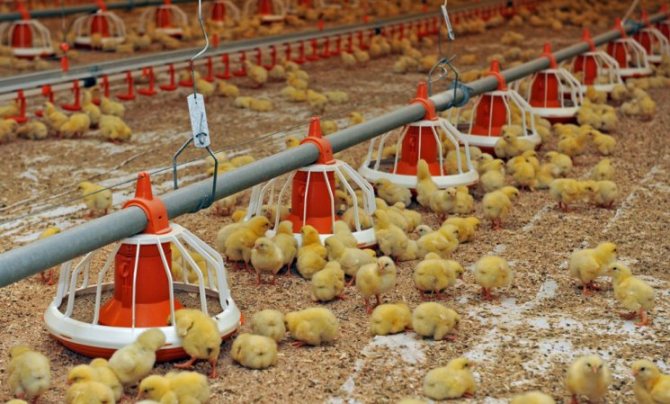

The rate of water consumption per chicken is at least 40 ml per day. The water must be changed every day to avoid infectious contamination.
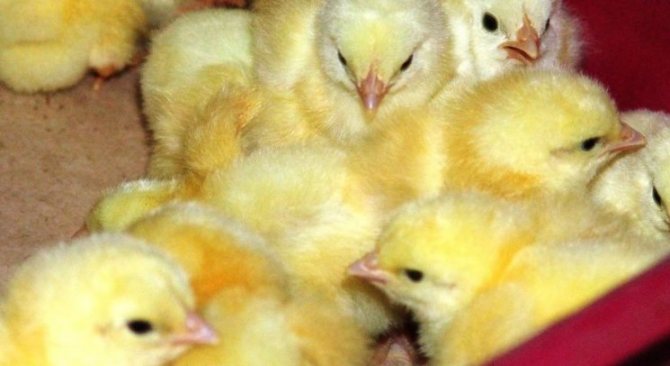

Incubation process
A typical household incubator is a medium-sized box made
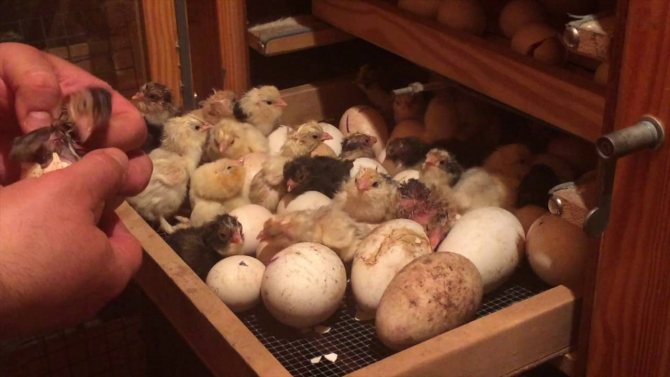

made of heat-insulating material, most often foam. The maximum number of eggs to be laid, as a rule, does not exceed 120 pieces. The hatchability in such devices exceeds 90%, which makes them quite competitive with farm automated incubators designed for several thousand.
All household incubators are divided into manual, mechanical and automatic, depending on the overturn mechanism:
- Manual. As a rule, these are very small home-made machines for 10-20 eggs. The turnover is carried out by hand, which has an extremely negative effect on hatchability, since whenever it is necessary to turn the eggs, it is necessary to open the incubator and thereby violate the temperature regime, the observance of which is very important in the initial stages.
- Mechanical. The coup is done manually, but with the help of special levers, which allows you not to open the incubator during the coup.
- Automatic. The coup takes place according to a given program in automatic mode.
Chicks will be hatched in any apparatus and the problem lies not in the incubator, but in the exact observance of all rules and recommendations.
Preliminary preparation
Before hatching chicks in the incubator, it is necessary to prepare it for work. Otherwise, you can ruin the whole party... Preparation consists of two stages:
- Thorough rinsing and disinfection of the device.Soapy water is best suited for these purposes; the latter is prepared using laundry soap and a few drops of iodine. All parts of the incubator are treated with this solution and then dried thoroughly.
- Preliminary check of all systems of the device. An empty incubator is connected to the network for two to three hours and the operation of temperature and humidity sensors, time switches is monitored, and the rotary mechanism (if any) is checked.
Placement of incubation material
Self-incubation is a rather complicated and time-consuming process. There are a number of strict rules that must be followed in order to get healthy chicks:
- Do not place cold eggs in the incubator. For 8-10 hours before laying, they are transferred from the room where they were stored to a room with a temperature of 25 degrees. During this time, their internal temperature should be equal to room temperature. If the temperature is below 25 degrees, then they will not have time to warm up, and if it is higher, then the abnormal development of the embryo may begin.
- It is necessary to preheat the water in the pan to 42 degrees. This is necessary so that after turning on the incubator, increased evaporation of water begins to quickly raise the humidity to the required level.
- Chicken eggs are placed in the incubator in the evening, after 18 hours. In this case, the first chicks will begin to hatch in the early morning and then the entire brood will appear during the next day. This is convenient from a practical point of view.
- At the time of laying, the eggs are sorted by size. The largest ones are laid first, after six hours medium-sized eggs are placed and after another six hours the smallest ones are laid. This tactic allows you to adjust the hatching schedule and obtain the simultaneous hatching of the entire batch at once, because larger eggs incubate for a longer time.
Chicken Formation Phases
During incubation in a healthy egg, a gradual chicken embryo formation and turning him into a chicken. This process lasts 21 days and can be conditionally divided into five successive phases:
- The first seven days. The beginning of the formation of all organs of the future chicken. On the second day, the embryo's heart begins to beat. By the end of the first week, the size of a chicken embryo is 1.5 cm.
- From the seventh to the eleventh day, the skeleton, beak, claws are formed. During ovoscopy, the circulatory system begins to be clearly distinguished.
- From the twelfth to the twentieth day. Covering fluff is formed, the formation of all organs and parts of the body is completed. Protein reserves are completely depleted, the yolk sac is retracted and practically disappears. Beeps through the shell are clearly distinguishable. The chicken is almost ready to go out into the big world.
- Twenty-first and twenty-second days. The final stage. The eyes open, the lungs begin to work actively, the umbilical ring closes completely. The chicken breaks the shell and comes out.
At the moment the chicken leaves the egg, in no case you can't help... He must do everything himself. This process is rather slow and takes several hours before the chick is finally freed from the remnants of the shell.
If, after 24 days, the egg has not hatched, then the chick is dead and it makes no sense to wait any longer.
Veterinary medicine and feeding of chickens
To raise broiler chickens at home without "surprises" in the form of stunted or, even worse, dead chicks, from 7 to 21 days inclusive, you will have to add "Biomycin" to the feed. The second good drug is Biovit-80.
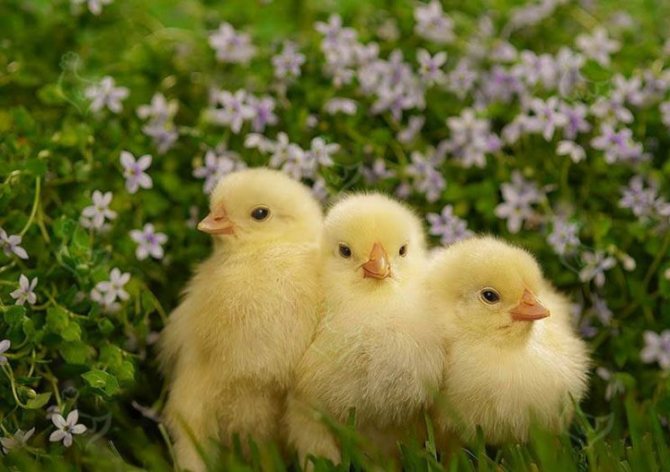

It is necessary to use the funds correctly:
- First, the consumption should not exceed 1 teaspoon per 100 chicks;
- Secondly, the best time to receive is in the morning when the young are hungry.
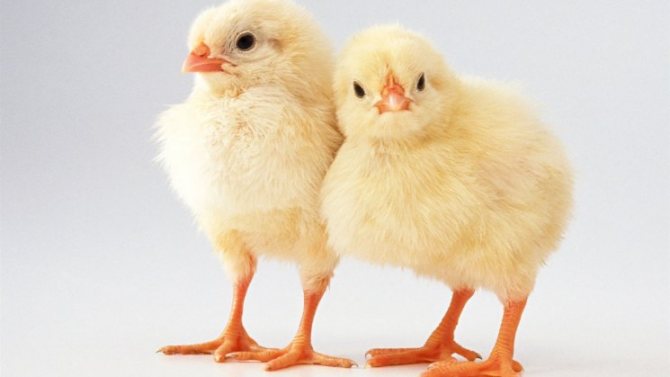

The rest will be taken care of directly by the selected drug. The thing is that "Biomycin" and "Biovit-80" are complex agents that have the effect of tetracycline and B12 at the same time.If the first is an antibiotic, then the second is a vitamin.


In winter, vitamin D3 is relevant. But you can limit yourself to fish oil so that chicks that lack natural light and movement do not lag behind in development. Groundbait is carried out on the 8th day. The ratio of the additive to the feed is 1: 100.
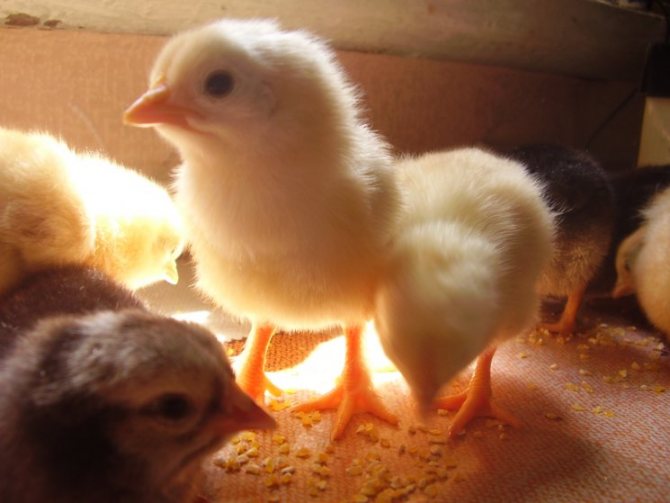

Another useful drug is Baycox 2.5%. It prevents coccidiosis. It is added to water within 3 days. The consistency of the solution is 1 ml of the product per 1 liter of water.
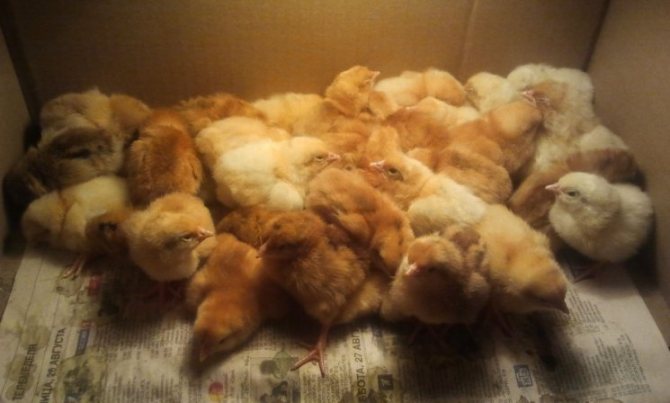

Using an incubator
This device recreates the conditions in which an egg would be under a chicken. The incubator will follow the exact temperature, humidity and air movement around the egg. All you need to do is set up the device correctly and maintain this process until the chick appears.
Each device has its own characteristics, so there are no complete, unique recommendations for its use. If you are just starting to understand this area and want to purchase a device for hatching chicks, then first you need to understand all the intricacies.
Initially, it is necessary to calculate what are the advantages and disadvantages of this method of raising birds.
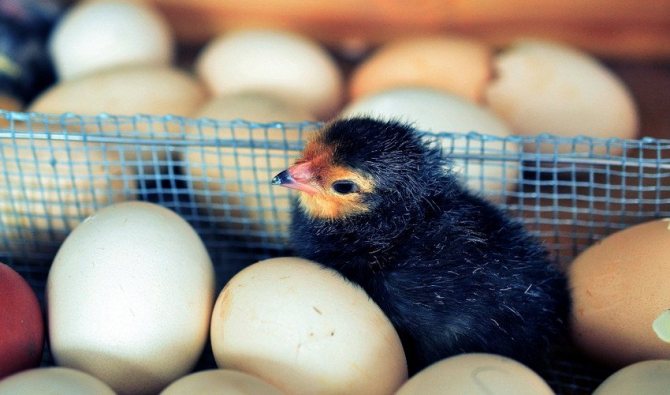

pros
- Among the advantages are the following characteristics of the device:
- low price of an incubator;
- simplicity and ease of use;
- availability;
- the ability to hatch a large number of chicks;
- minimum participation of the farmer.
Minuses
- There are also negative features, these are:
- electricity costs;
- constant control over the operation of the apparatus.
Did you know? A person hears only the clucking of birds or the usual clicks, but in fact this is a real language. Experts have identified about 30 different meanings of sounds that chickens and roosters communicate with each other.
Chicken keeping
The conditions for keeping young animals depend on the weather in the yard. If the formation of broilers falls on May-September, then the chicks usually grow stronger by 5-7 days. This gives them a reason to walk them in the fresh air for 5-15 minutes. Every 3 days, the corresponding period of time can be increased by 5-10 minutes.
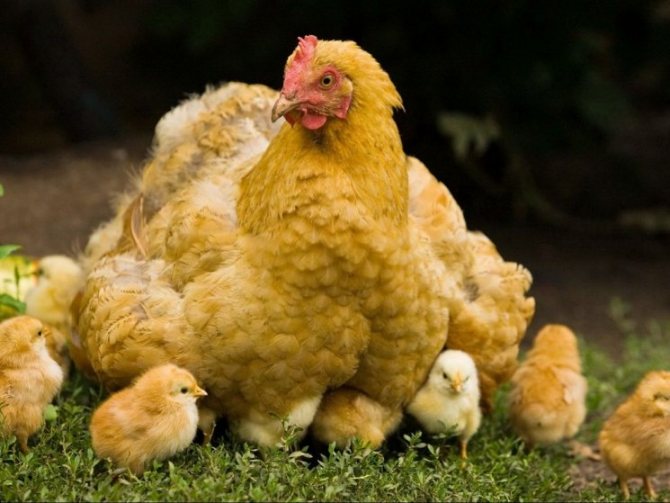

At sub-zero temperatures, not only is it not worth using open cages for raising chickens, it is still not recommended to walk young animals in the open air in principle.
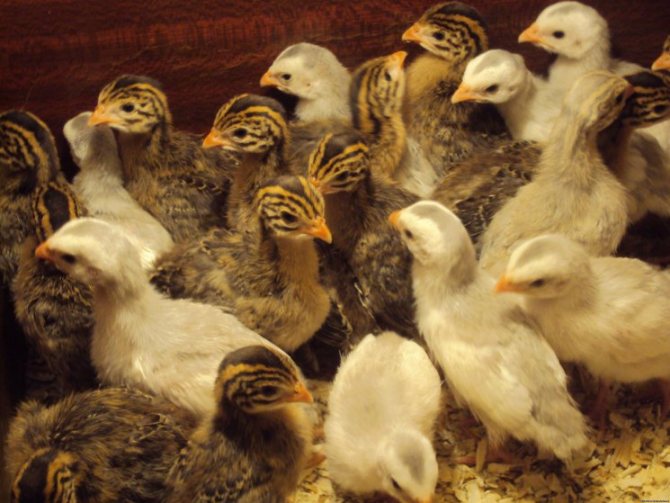

Only after reaching 40 days of age, matured broilers can be released outside according to the "summer" program. The exception is January-February. During this frosty season, the house can only be ventilated for 10-15 minutes.
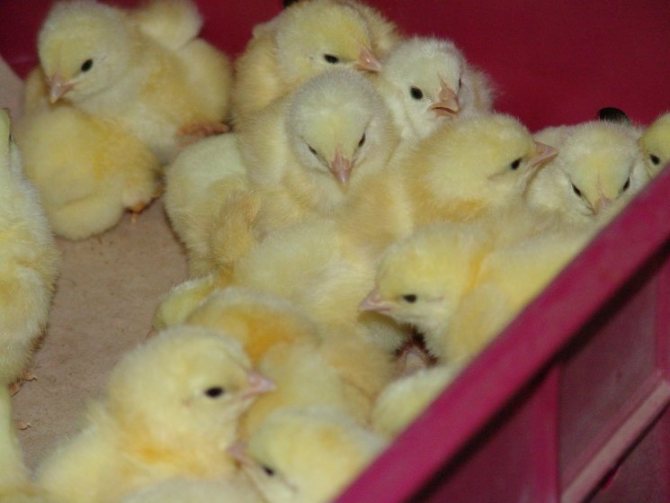

By the way, it is necessary to lower the temperature in the poultry house, regardless of the season, when the chickens are 1 month old. The activity should be gradual - 0.5 ° C per day so that the final temperature is + 18-20 ° C.
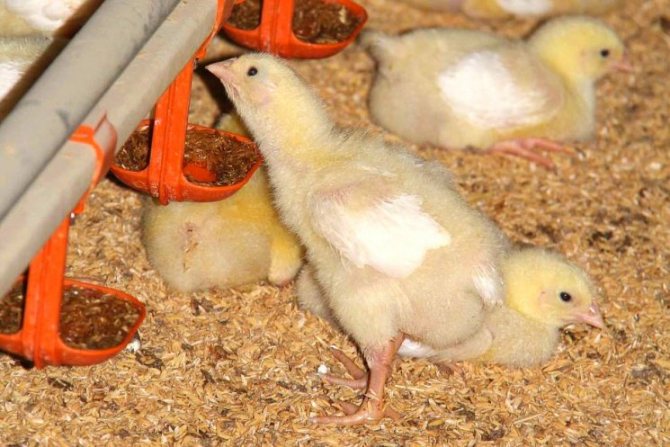

And when they reach 45 days of age, young animals can be left without a heater at all. At this point, broilers should be relocated to a larger house.
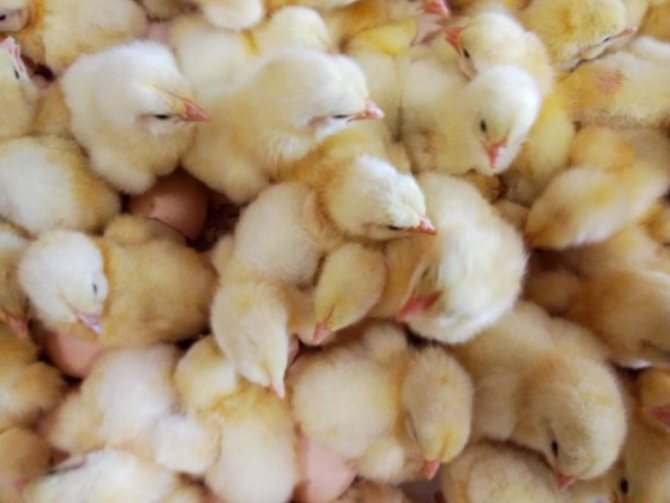

The corresponding area is based on 15 chicks per square meter. After 2 months, it is 10 chicks per 1 square meter.
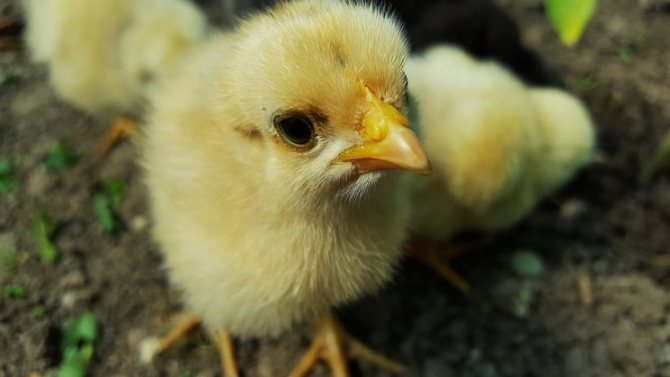

And if the weather in the yard is clear and warm, then at the age of 3 months young animals can be left in the fresh air for the whole day. But then in the walking area you will have to provide for partial shading.
Full-fledged fattening of cockerels for meat by means of BMVD begins on 120-150 days. But that is another topic.
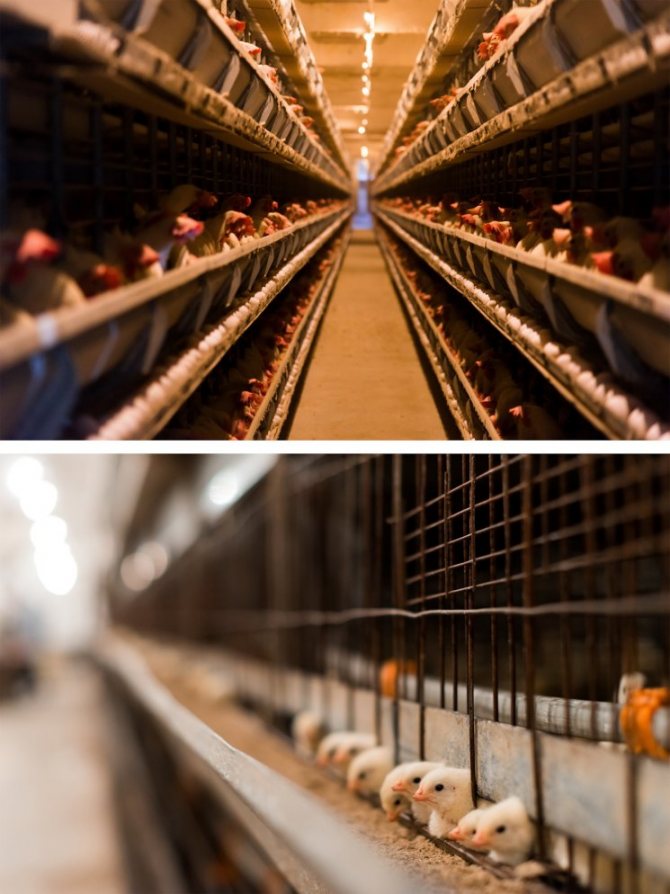

How to determine the gender of a chicken: chicken or rooster?
In the egg
How to identify a chicken from a rooster in an egg? Not many poultry farmers will be satisfied when, after hatching, the percentage of males will be almost 80-90%.Therefore, in these cases, the method of determining the sex of a cock or a chicken by egg is used. It would seem that this task is difficult and almost impossible, but this is far from the case.
To determine the sex of the egg, recommendations will help:
- First you need take an egg in your right hand, while the sharp end of the egg should be directed upward;
- Further run your left finger along the top of it;
- If a ring and tubercles are observed at the upper end, then these criteria indicate that a cockerel will appear. If the top of the egg has a smooth structure - a chicken.
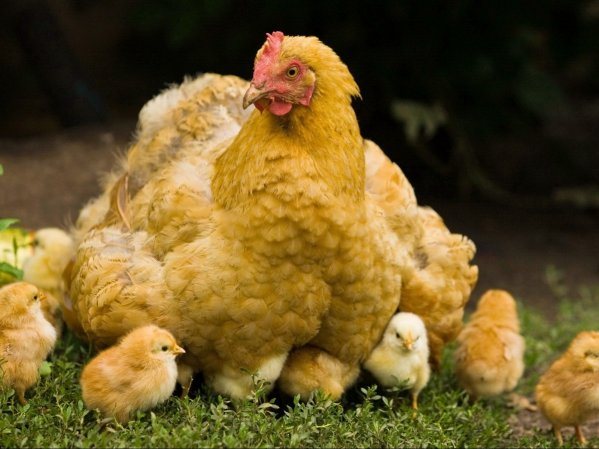

Hatching chicks with a brood hen
At day-old
How to distinguish a chicken from a cockerel at one day of age? At one day of age, sexual characteristics do not appear at all clearly, so it is quite difficult to determine the sex. Females usually have more luxuriant plumage., but males, on the contrary, are scarce, in some places they can be without fluff.
At 2 months
How to distinguish a rooster from a chicken at 2 months old? At this age, gender can be determined using several methods:
- By plumage... Individuals with abundant plumage are females, and those with poor plumage are males;
- By this age, the cockerels have a comb, the beard turns red, and the face is rounded;
- In cockerels, legs become longer, spurs can already be seen on them;
- In males, overgrown plaits appear on the tail.
At 3 and 4 months
How to distinguish a rooster from a chicken at 3 or 4 months At the age of 3 months, sex determination of individuals is much easier, in roosters you can see the following external characteristics:
- The scallop becomes bright in color;
- The crest, beard and earrings become large;
- The legs become high;
- Spurs are already clearly visible on the legs;
- The tail has long braids.
Photo of growing chickens
Please repost
1+

